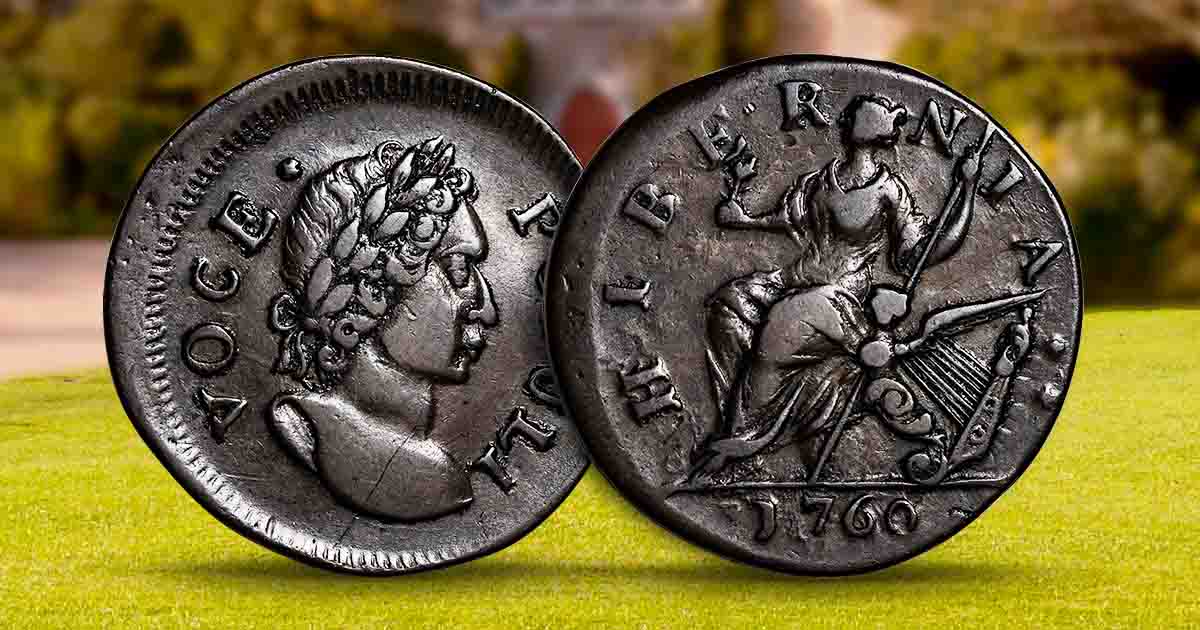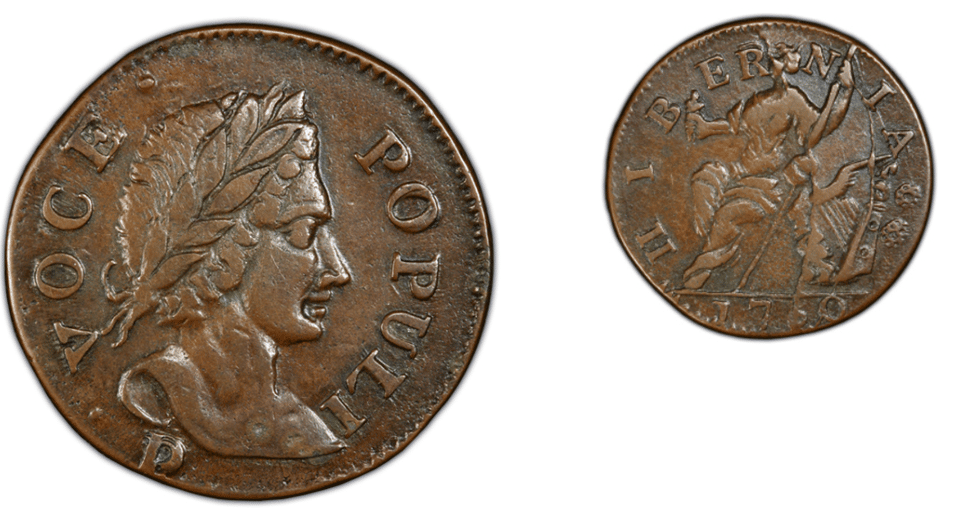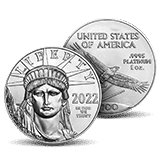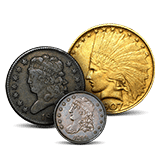
The History of Hibernia-Voce Populi Coins
By the middle of the 18th Century small copper coins were scarce all across Europe and especially in Ireland. Having survived several famines leading up to that time, much of their coinage was transported in the pockets of travelers settling in the New World.
None of the then-official royal farthings and royal halfpennies intended for use in Ireland had arrived by the year 1760, so underweight and crudely struck Voce Populi (Voice of the People) farthings and halfpennies first made their appearance in Ireland around 1760.
Little is known about the origin of these coins, though it is thought that a man named Roche had them minted and distributed. Roche was a button-maker in Dublin so this seems entirely plausible. These Voce Populi coins were struck prior to 1760 and into at least 1761, though they all bear the date of 1760.
By 1762, the royal farthings and halfpennies began to circulate but these Voce Populi coins circulated right along with the official coinage. By that point, Ireland’s economy was shaky and all coins were seemingly accepted including lightweight counterfeit and imitation Irish copper coins.
It is assumed by those who have studied this series that many of these copper coins had made their way to the American colonies in the pockets of new settlers there. No documented evidence has yet surfaced to prove that these coins were ever intended to circulate in America, but it is a reasoned fact. Many of these Voce Populi copper coins have been found in the earliest American coin collections that specifically contain colonial coinage.
The obverse of the Farthings and Halfpennies display a male bust, facing right, wearing a laurel wreath around his head. The wreath personifies that this person is one of the common people. Behind the head is the Latin word “VOCE” and in front of the bust is the Latin word “POPULI” which translates to “By the Voice of the People.”
The reverse depicts a seated figure of Hibernia, facing left. Hibernia is holding a staff and to the right of the staff is a harp (representing Ireland). Around Hibernia is the motto “HIBERNIA” and below the seated Hibernia is the date, in exergue, of 1760.
A few varieties of the halfpence have the letter ‘P’ on the obverse, in front of the face. We are unsure as to the significance of the letter “P”. At least 16 obverse dies and 11 reverse dies are known and they create 16 die combinations. In addition, there are also at least five different border designs – such as beads and milling. These die varieties and differences may indicate that several mints or die makers created these coins.

| Date | Type | Mintage | VG Value | AU Value |
| 1760 | Farthing Lg Letters | Unknown | $350 | $3,500 |
| 1760 | Farthing, Sm Letters | Unknown | $6,000 | $24,000 |
| 1760 | Halfpenny | Unknown | $125 | $750 |
| 1760 | Halfpenny VOOE POPULI | Unknown | $200 | $1,200 |
| 1760 | Halfpenny “P” below bust | Unknown | $250 | $1,750 |
| 1760 | Halfpenny “P” in front of Face | Unknown | $200 | $1,500 |
Discover the joy of adding rare coins to your collection and shop our assortment of rare U.S. coins today.




